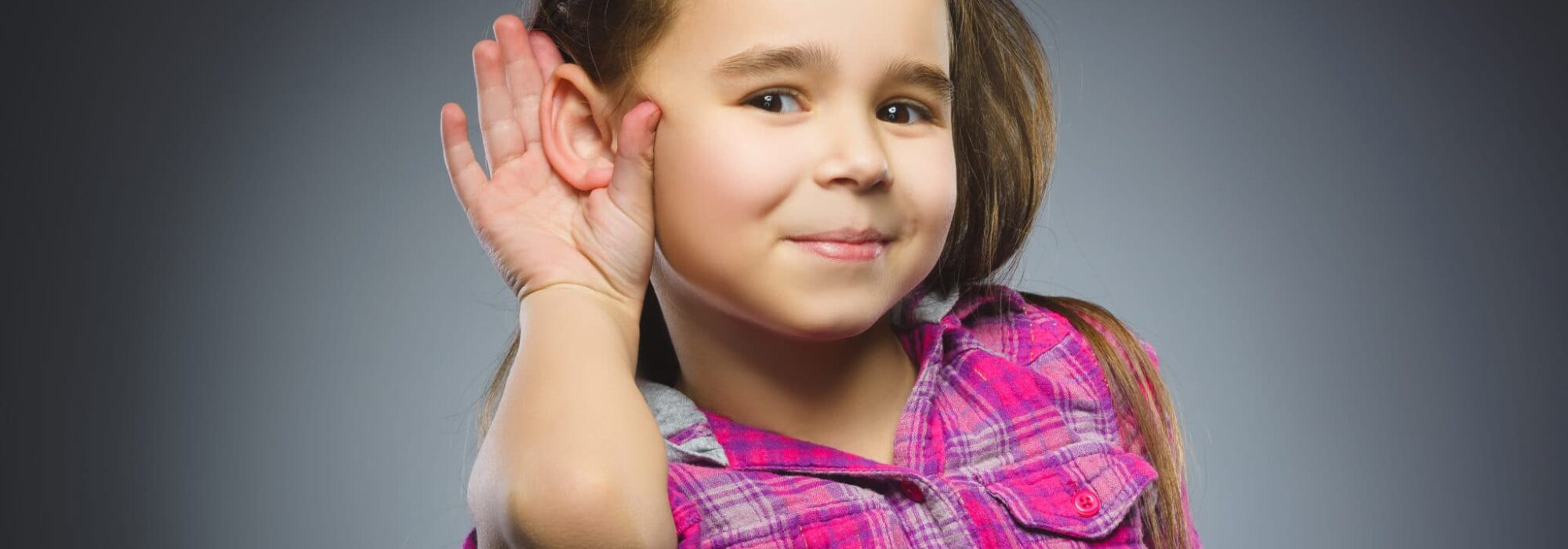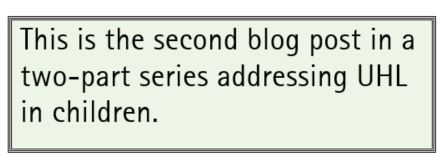
It takes two, baby: A treatment approach for unilateral hearing loss (Part II)
Children with unilateral hearing loss occupy a “gray area” between normal hearing and what is typically thought of as hearing-impaired children. Treating these children requires a comprehensive, individualized approach.

In my previous article, I discussed some of the challenges children with unilateral hearing loss, or UHL, suffer on a daily basis. While the presence of one normal hearing ear may give the impression the child can “hear normally” on one side, the child with UHL faces significant challenges in everyday listening stemming from the loss of binaural auditory processing. There can be significant variability in problems experienced by this population and individualized management plan involving caregivers and teachers is needed for this patient population. This strategy ensures the selected combination of amplification, compensatory strategies, academic support services, and parental education address the specific difficulties experienced by the child, is culturally-sensitive and appropriate, and the child is consistently monitored for improvement.
When it comes to amplification options, every child with UHL should be using a remote microphone system. There is overwhelming research showing the positive benefit of delivering the target signal directly into the normal-hearing ear for speech understanding in noise.1-3 When selecting a remote microphone system, an ear-level option is best, as research shows soundfield solutions are of less benefit to children with UHL4. Selecting ear-level amplification for the child with UHL might be challenging, and requires significant input from parents and the child themselves. Options for UHL include a traditional hearing aid, a CROS (Contralateral Routing of Signal) device, and a BAHA (bone-anchored hearing aid). Some children with UHL will demonstrate benefit with hearing aids while others may not.5 Whichever amplification option is decided upon, it is important to trial the amplification first to determine the benefit received. For those children with a severe-to-profound degree of hearing loss in the impaired ear, recent research shows a cochlear implant has the potential to at least partially restore binaural hearing abilities, including hearing-in-noise and localization.6 This is significant, as research suggests children with severe-to-profound UHL benefit the least from traditional amplification.5
For decades, the gold-standard of treatment for children with UHL was preferential classroom seating. This was before it was discovered these children had an academic failure rate ten times higher than that of their normal hearing peers.7 Preferential seating is still a useful management tool, with research showing the child with UHL have speech recognition scores similar to that of a normal hearing child if they are seated within 6.27 meters of the instructor.8 However preferential seating should always be used in conjunction with other management strategies. Especially given the dynamic nature of classrooms, where distance between the student and the source of the target signal cannot always be guaranteed. In addition to classroom seating, instructing children and their parents how to communicate and adapt in difficult listening environments can help optimize the at-home listening environment.
It is important to help parents understand the reasons their child is having difficulty. Giving them written materials and online resources informing them of the nature of the child’s hearing loss, common challenges, and suggestions for improving communication can help optimize communications between parent and child. While the audiologist is not directly responsible for obtaining special services for the child, it is important to familiarize yourself with the resources and regulations in your local area. As many as 55% of children with UHL utilize special services in the classroom9 and parents who are not familiar with the system may not know what services are available.
Obviously, this article only skims the surface of treatment protocols for children with UHL. These children require a hands-on, individualized approach to treating their listening needs, and audiologists should familiarize themselves with their available resources. Although much of the existing literature on UHL examines outdated or obsolete amplification technologies, renewed interest in the topic will hopefully bring forth more studies featuring modern technologies. Regardless of the selected management approach, involvement of the parents is critical to ensure the needs of the child are met appropriately and their progress is monitored.
To learn more – the Unilateral Hearing Loss in Children Conference will be held in Philadelphia on October 22 – 24, 2017. Topics include the latest implications of UHL, a review of technological management approaches, family-centered perspectives, and discussion on contemporary management strategies. Find more information here.
REFERENCES:
1 Kenworthy, O.T., Klee, T., Tharpe, A.M. (1990). Speech recognition ability of children with unilateral sensorineural hearing loss as a function of amplification, speech stimuli, and listening condition. Ear and Hearing, 11(4), 264 – 270.
2 Tharpe, A.M., Ricketts, T., & Sladen, D.P. (2003). FM systems for children with minimal to mild hearing loss. In ACCESS: Achieving Clear Communication Employing Sound Solutions (chapter 20). Retrieved from https://www.phonakpro.com/content/dam/phonak/b2b/FM_eLibrary/ACCESS_Chapter_20_ Anne_ Marie_Tharpe.pdf
3 Stewart, E., Houston, B., & Holstad, B. (2016). Optimization of device fittings for two children with unilateral hearing loss: The benefit of bilateral Roger use. Poster session presented at the 7th International Pediatric Audiology Conference, Atlanta, GA.
4 McKay, S. (2008). Frequency modulated (FM) considerations for children with minimal/mild or unilateral hearing loss. Perspectives on Hearing and Hearing Disorders in Childhood, unknown, 10 – 18.
5 McKay, S., Gravel, J.S., & Tharpe, A.M. (2008). Amplification considerations for children with minimal or mild bilateral hearing loss or unilateral hearing loss. Trends in Amplification, 12(1), 43 – 54.
6 Arndt, S., Prosse, S., Laszig, R., Wesarg, T., Aschendorff, A., & Hassepass, F. (2015). Cochlear implantation in children with single-sided deafness: Does aetiology and duration of deafness matter? Audiology & Neurotology, 20(1), 21 – 30.
7Oyler, R.F., Oyler, A.L., & Matkin, N.D. (1988). Unilateral hearing loss: Demographics and educational impact. Language, Speech, and Hearing Services in Schools, 19(1), 201 – 210.
8Noh, H. & Park, Y.G. (2012). How close should a student with unilateral hearing loss stay to a teacher in a noisy classroom? International Journal of Audiology, 51(6), 426 – 432.
9 McKay, S., Knightly, C., Marsh, R., Amann, C. & Gravel, J. (2007, December). Perceived listening difficulties of children with unilateral hearing loss. Poster session presented at the A Sound Foundation for Early Amplification conference, Chicago, Il.
